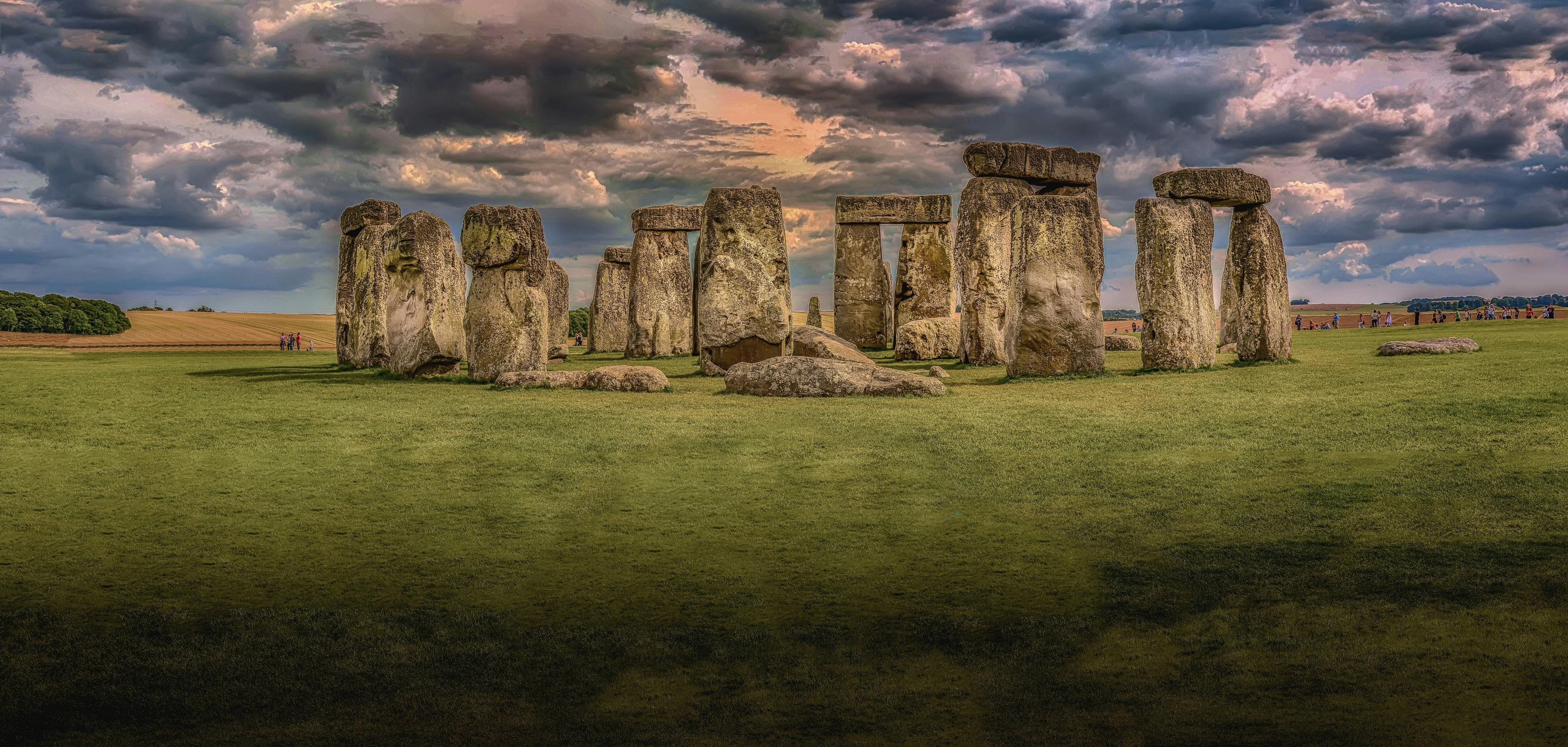Article #004: Exploring Stonehenge
Published: 01/17/2023

Stonehenge under nimbostratus clouds on a sunny day. (Image Credit: Pixabay/pexels.com)
The Stone Henge is one of the most mysterious monuments as of 2023. Nobody really knew the true motive behind the structure, but researchers are starting
to recognize astronomical patterns in the arrangements of these massive stones.
Rumors say that the Stone Henge was constructed by a group of healthy farmers around 3000 - 1520 BCE and was used for ceremonial purposes in 8000 - 7000 BCE.
Context
Stonehenge is a prehistoric stone monument located in Salisbury Plain (Wiltshire, England). The Stonehenge was rumored to have been built by the Druids (Celtic priests). However, carbon dating has provided enough evidence to show that these stones were placed there 1000+ years before the Druids arrived.
The name of the monument probably originates from the Saxon "stan-hengen", meaning "stone hanging" in English.
Science
Stonehenge was built in six distinct stages between 3000 and 1520 BCE, during the transition from the Neolithic Period to the Bronze Age. Stonehenge is beautifully unique because of its sarsen bluestones (originate from South Wales which is 100-150 miles away from the archaeological site) arranged in a post-and-lintel formation. Creating such a monument definitely required a significant amount of dedication and time as each stone weighs around multiple tons.
The bluestones that are used in the Stonehenge monument are actually igneous rocks that are rumored to be from the Snowdon mountain when it used to lie in the center of a ring of volcanic activity in Wales. The volcanic rocks of Snowdonia erupted about 450 million years ago in the "Ordovician" time period. The volcanoes that erupted are now extinct and can't come back to life because they no longer have a supply of magma.
Purpose
People have believed for a long amount of time that the purpose of the Stonehenge was to serve as a religious site and express the wealth of the chieftains, aristocrats, and priests. However, recent discoveries from astronomers explain that the Stonehenge can actually be used as a clock to indicate the current season of that region on the planet.
If you look at the whole Stonehenge region and map it out, you can notice the alignment of the heelstone (a stone located way out of the main circle) with the rest of the monument. If you look from the heelstone towards the circle of stones, you can see the sun rise perfectly between the holes in the structure of the Stonehenge and rise above the heelstone. This event shows the astronomical significance of the Stonehenge and that many religions used it for their astronomical calculations.
Gerald Stanley Hawkins, an American astronomer, figured out that there were 56 holes dug around the perimeter of the circle of stones.
In the early days of scientific computing, Gerald Hawkins plugged these coordinates into his computer program, and found that there are configurations
of the holes that enable us to predict eclipses.
Eclipses recur based on saros timescales which is the amount of time it would take for the sun and moon to revolve and realign themselves to produce an
eclipse. Since the moon revolves around the Earth at a tipped angle relative to the angle of revolution of the Earth around the Sun, we find eclipses occur
every two and a half years approximately. If the Earth and the Moon's revolution was aligned perfectly, we would have eclipses twice a month for the full
moon and the new moon.
Researchers who have been studying eclipses, have found that some of these eclipses repeat at a constant rate of 18.6 years. This timescale is also known
as the Lunar Saros Timescale. The Stonehenge is able to predict upto 3 upcoming future eclipses since it has 56 holes (18.6 * 3 = 56)

Map of the stonehenge's astronomical stone placement and arrangements (Image Credit: Wikipedia Commons)
Written by BooleanCube :]